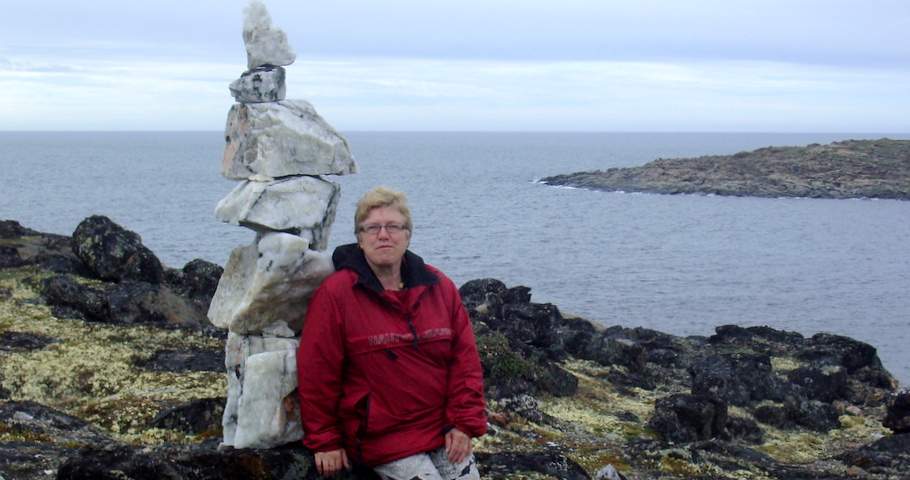 In Quebec, on average, 70% of Indigenous and Inuit households derive their income from social assistance. Canada is 78th in industrialized countries if we let statistics speak on the poverty of Indigenous and Inuit people. One in four children lives in poverty among Aboriginal and Inuit.
In Quebec, on average, 70% of Indigenous and Inuit households derive their income from social assistance. Canada is 78th in industrialized countries if we let statistics speak on the poverty of Indigenous and Inuit people. One in four children lives in poverty among Aboriginal and Inuit.The children disappear behind the numbers and their poverty is concealed behind statistics that reflect a general improvement of the situation, but completely obliterate the disparities in our society.
No Child Should Take the Long Way Home is a grassroots initiative to help children in need of loving care, of a protective and stable environment to meet their basic needs for protection, shelter, and education.
Children live adverse living conditions
The reality of children who live adverse living conditions is characterized by poverty, underemployment, idleness and unsanitary and overcrowded housing. Poverty, isolation, and aimlessness of the reserves or the vast tundra are also considered powerful predictors in terms of identifying the high suicides rates among adolescents and young Indigenous adults. And this corresponds to the definitions of the risk of school and social maladjustment.
The causes of poverty and social deprivation are related to the settlement
Recent research suggests that psychosocial problems in Inuit children and Indigenous teenagers are the product of the interaction between their socioeconomic status and environmental conditions on the one hand, and, secondly, their sociocultural and historical characteristics specific to each community. Children in our country are at risk because they are overlooked and disappear in faulty or non-existent statistics.Contingencies, uncertainties, unexpected events from the human environment
In such a socioeconomic context, the existence of a feeling of powerlessness to transform their environment and, consequently, an uncertain trend to adapt to their new realities is a pervasive sentiment among Indigenous and Inuit as they continue their interaction with whites. Any interpersonal action with whites is seen as struck with contingencies, uncertainties, unexpected events from the human environment.Is our government ready to tackle child poverty?
When told that “The situation is not completely dark, that "The future prosperity depends on a lot of energy, creativity, and talent”, I ask myself whether our government is ready to tackle child poverty.Violence declined in overcrowded houses
The generated stress, especially in a context of socioeconomic dependency, the breakdown of effective socialization patterns as part of the extended family due to necessity is not functional in a village-type environment and has identified as one of the risk factors of self-destructive behaviors. The response to the stress of the housing situation has been identified as a factor associated with depression, suicide, alcoholism, drug addiction and to violent behavior, usually restricted to the family environment.Since 2006, the situation has worsened
Thousands of Indigenous and Quebec and Labrador Inuit live in homes requiring major repairs. Fifteen to sixteen adults and children share a space fit for five or six. Such mundane tasks as making meals, study or even go to the bathroom become sources of explosive conflicts. "We have no choice." Piled one over the other, the situation generates tensions, hopelessness, depression, alcohol and substance abuse problems. A handful of homes per community were distributed to 14 communities in the Hudson Bay and Ungava Bay to give shelter to a few families. Like thousands of Quebec natives, members of several communities, including those in Nunavik, are missing several hundred houses (900 for 14 communities) to give shelter to all those who need it.Housing is "a major issue"
In 2013, at the Department of Canadian Indigenous Affairs, spokeswoman Genevieve Guibert recognized that significant investments must be made to support housing. She assured that Ottawa would meet the requirements of the study published that summer by her department. We are told that “better prevention of overcrowding and deterioration and closer work with field players” was the goal.In 2015, parents continue to accommodate their adult children with their children, grandparents, uncles, and aunts increasing chaotic tensions due to overcrowding. Poverty seems to drive almost all of overcrowding situation. For example, it's very difficult for a woman to leave an abusive relationship when there are issues of housing when she’s living on social assistance. It’s not enough money to support someone, let alone children, when there’s a lack of resources.







No comments:
Post a Comment